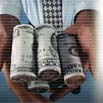Edmunds.com Reports True Cost of Incentives: Auto Incentives Fall for Fifth Straight Month
 |
SANTA MONICA, Calif.--Edmunds.com, an online resource for automotive information, estimated today that the average automotive manufacturer incentive in the U.S. was $2,475 per vehicle sold in August 2009, down $231, or 8.5 percent, from July 2009, and down $327, or 11.7 percent, from August 2008.
“In March, the industry spent a record $3,165 per car, but since that time incentives have continuously fallen,” stated Jessica Caldwell, Director of Industry Analysis for Edmunds.com. “Supply is low right now since Cash for Clunkers depleted the small inventories generated during shortened production runs earlier this year, but I expect we’ll be telling a very different story in the months to come.”
According to Edmunds.com, combined incentives spending for domestic manufacturers averaged $3,193 per vehicle sold in August 2009, down from $3,617 in July 2009. From July 2009 to August 2009, European automakers increased incentives spending by $289 to $3,751 per vehicle sold; Japanese automakers decreased incentives spending by $11 to $1,571 per vehicle sold; and Korean automakers decreased incentives spending by $523 to $2,504 per vehicle sold.
|
True Cost of Incentives for the Top Seven Automakers |
|||||||||
|
Automaker |
August 2009 |
July 2009 |
August 2008 |
||||||
| Chrysler Group (Chrysler, Dodge, Jeep) | $ | 3,018 | $ | 4,218 | $ | 4,604 | |||
| Ford (Ford, Lincoln, Mercury, Volvo) | $ | 3,182 | $ | 3,311 | $ | 3,437 | |||
|
General Motors (Buick, Cadillac, Chevrolet, GMC, Hummer, Pontiac, Saab, Saturn) |
$ | 3,343 | $ | 3,647 | $ | 4,053 | |||
| Honda (Acura, Honda) | $ | 947 | $ | 1,281 | $ | 1,426 | |||
| Hyundai (Hyundai, Kia) | $ | 2,504 | $ | 3,027 | $ | 2,044 | |||
| Nissan (Infiniti, Nissan) | $ | 2,620 | $ | 2,608 | $ | 2,512 | |||
| Toyota (Lexus, Scion, Toyota) | $ | 1,543 | $ | 1,310 | $ | 1,534 | |||
| Industry Average | $ | 2,475 | $ | 2,706 | $ | 2,802 | |||
In August 2009, the industry’s aggregate incentive spending is estimated to have totaled approximately $2.9 billion, up 7.6 percent from July 2009. Chrysler, Ford and General Motors spent an aggregate of $1.5 billion, or 53.6 percent of the total; Japanese manufacturers spent $778 million, or 26.8 percent; European manufacturers spent $299 million, or a near-record 10.3 percent; and Korean manufacturers spent $270 million, or 9.3 percent.
“Unlike the rest of the industry, the European automakers boosted incentives in August, but their luxury cars and sports cars still didn’t sell well during the Cash for Clunkers period,” noted Edmunds.com Senior Analyst Michelle Krebs in her report on AutoObserver.com. “Meanwhile, compact cars and trucks sold like crazy, and in retrospect it seems that automakers may have spent more than they needed to when incentivizing them.”
Among vehicle segments, premium luxury cars had the highest average incentives, $5,931 per vehicle sold, followed by premium sport cars at $5,791. Subcompact cars had the lowest average incentives per vehicle sold, $1,314, followed by sport cars at $1,862. Analysis of incentives expenditures as a percentage of average sticker price for each segment shows compact trucks averaged the highest, 11.4 percent, followed by large cars at 11.1 percent of sticker price. Sport cars averaged the lowest with 5.9 percent and premium sport cars followed with 6.1 percent of sticker price.
Comparing all brands, in August Scion spent $235 followed by smart at $422 per vehicle sold. At the other end of the spectrum, Cadillac spent the most, $6,121, followed by BMW at $6,010 per vehicle sold. Relative to their vehicle prices, Pontiac and Volvo spent the most, 17.3 percent and 15.9 percent of sticker price, respectively; while Scion spent the least at 1.4 percent and Smart spent 2.9 percent.
Edmunds.com’s monthly True Cost of IncentivesSM (TCISM) report takes into account all automakers’ various U.S. incentives programs, including subvented interest rates and lease programs, as well as cash rebates to consumers and dealers. To ensure the greatest possible accuracy, Edmunds.com bases its calculations on sales volume, including the mix of vehicle makes and models for each month, as well as on the proportion of vehicles for which each type of incentive was used.
About Edmunds Inc. (http://www.edmunds.com/help/about/)
Edmunds Inc. publishes four Web sites that empower, engage and educate automotive consumers, enthusiasts and insiders. Edmunds.com, the premier online resource for automotive consumer information, launched in 1995 as the first automotive information Web site. Its most popular feature, the Edmunds.com True Market Value®, is relied upon by millions of people seeking current transaction prices for new and used vehicles. Edmunds.com was named “Best Car Research Site” by Forbes ASAP, has been selected by consumers as the “Most Useful Web Site” according to every J.D. Power and Associates New Autoshopper.com Study(SM), was ranked first in the Survey of Car-Shopping Web Sites by The Wall Street Journal and was rated “#1” in Keynote’s study of third-party automotive Web sites. Inside Line launched in 2005 and is the most-read automotive enthusiast Web site. CarSpace launched in 2006 and is an automotive social networking Web site and home to the oldest and most established automotive community. AutoObserver.com launched in 2008 and provides insightful automotive industry commentary and analysis. Edmunds Inc. is headquartered in Santa Monica, California, and maintains a satellite office in suburban Detroit.


